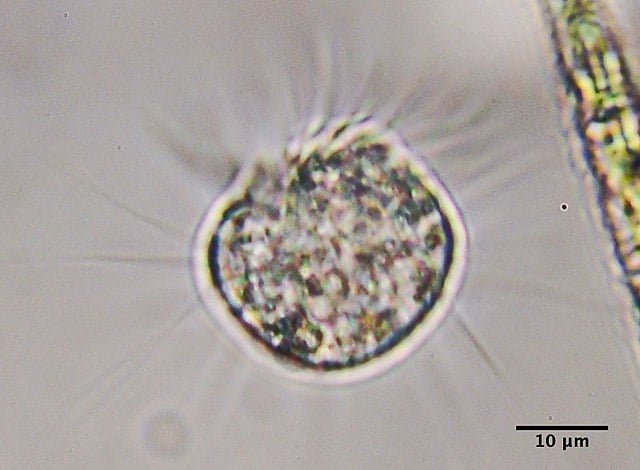 Scientists Found First Known Microbes That Eat Only Viruses. Credit: Don Loarie / Wikimedia Commons / CC BY 4.0
Scientists Found First Known Microbes That Eat Only Viruses. Credit: Don Loarie / Wikimedia Commons / CC BY 4.0Every species of organism has evolved to eat at least one form of organic material, and different animals eat a variety of substances, such as vegetation, meat, algae, insects, and germs. However, scientists recently discovered that viruses are also on the menu for certain microbes.
According to research published in the journal Proceedings of the National Academy of Sciences of the United States of America, the possibility of creatures unintentionally consuming viruses is unavoidable given their widespread presence in the environment.
John DeLong, a researcher at the University of Nebraska–Lincoln, was interested in determining whether or not any bacteria actively consumed viruses and if such a diet could sustain both individual and community population growth.
“They’re made up of really good stuff: nucleic acids, a lot of nitrogen and phosphorous,” said DeLong. “Everything should want to eat them. So many things will eat anything they can get ahold of. Surely something would have learned how to eat these really good raw materials.”
According to a study by New Atlas, DeLong and his colleagues collected water samples from the pond, isolated a number of microorganisms, and then tested their hypothesis by introducing a large number of chloroviruses. These are native to freshwater and infect green algae.
Over the course of the next few days, the scientists examined population numbers of both the viruses and other bacteria to determine whether or not the latter was feeding on the former.
Halteria—bacteria that eats chlorovirus
Researchers have discovered the first known "virovore," an organism that feeds on viruses. Probably there are many others like it — an entire, previously unknown food chain.
One day into 2023, and already things are going topsy turvy. https://t.co/OvYfKM45Fm #ecology #life pic.twitter.com/9jOXhM4sxL
— Corey S. Powell (@coreyspowell) January 1, 2023
In reality, a particular kind of bacterium, known as Halteria, which is a ciliate, appeared to be consuming the viruses.
In water samples in which the ciliates did not have access to any other food source, the concentration of Halteria populations increased by around fifteen times in just two days, while the concentration of chlorovirus concentrations declined by a hundred times.
However, in the absence of the virus, the Halteria organism did not show any signs of growth in the control samples.
In further studies, the researchers found that after labeling chlorovirus DNA with a fluorescent dye, Halteria cells quickly began to glow. This made it much easier for the scientists to demonstrate that Halteria was, in fact, eating the virus.
According to the findings of these studies, the relatively new concept of “virovory” can now coexist with herbivory, carnivory, and other types of feeding, and Halteria has now been recognized as the first known virovore to date.
It is most likely not the only virovore, of course, and researchers are planning for further studies into Halteria. The aim is to also investigate how it impacts more extensive systems such as the carbon cycle and food webs.

 1 year ago
105
1 year ago
105











 English (US)
English (US)